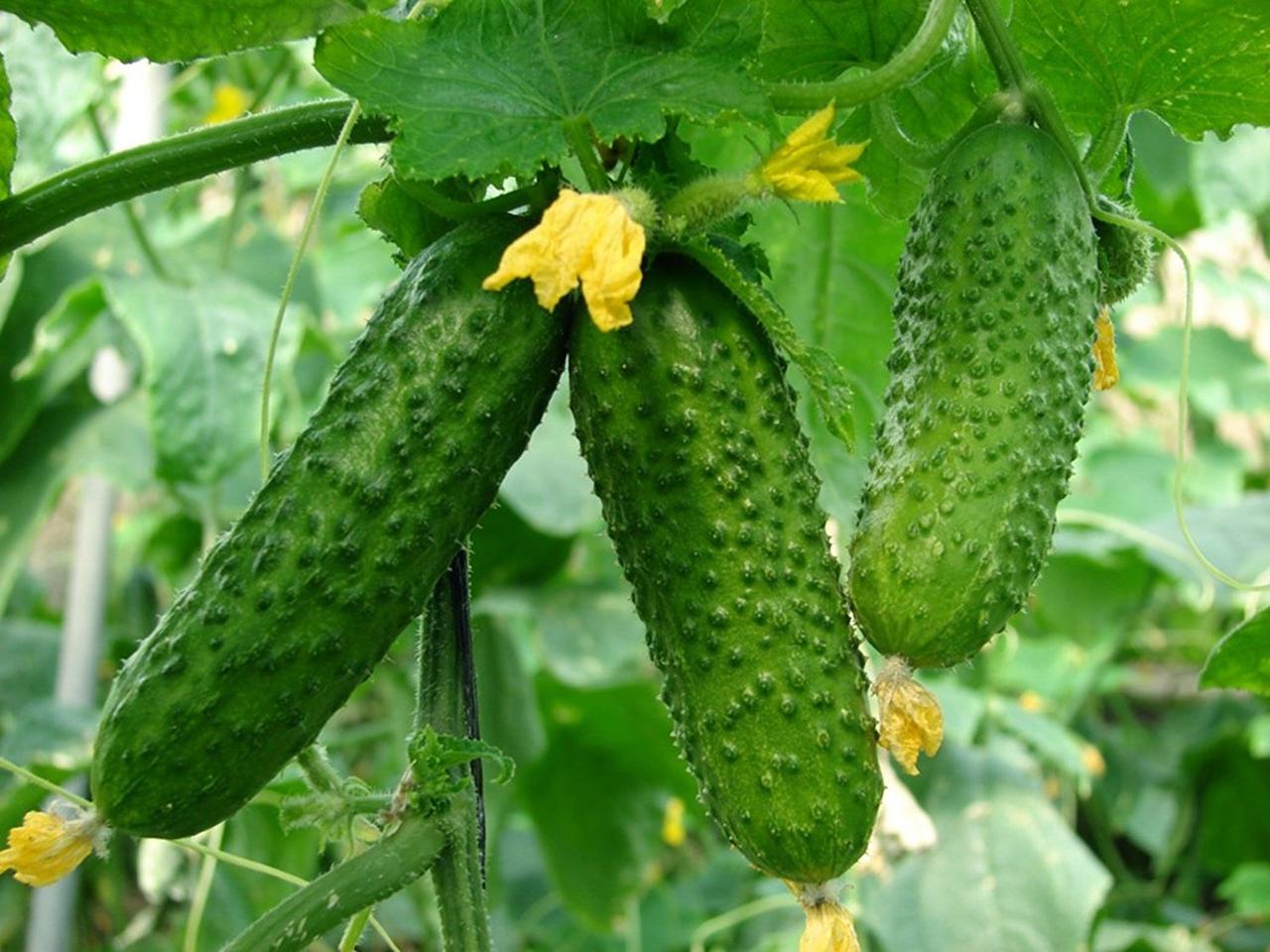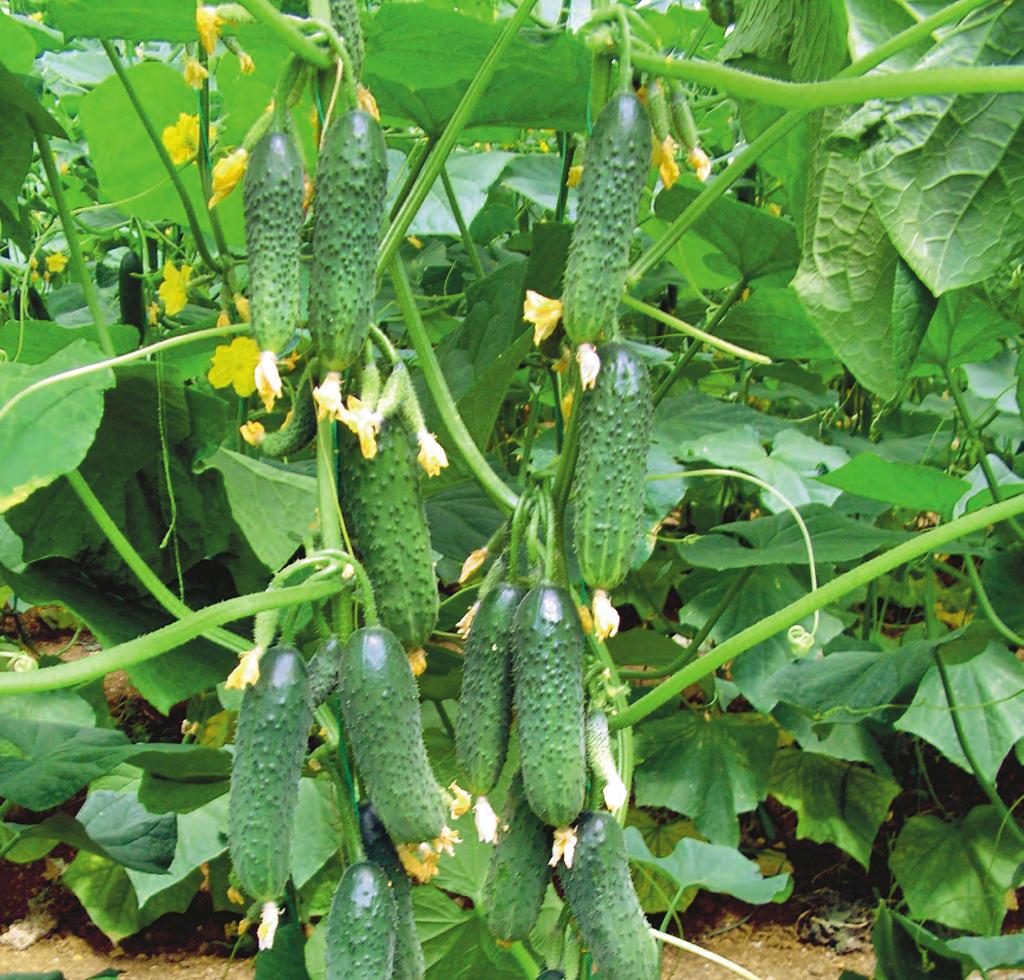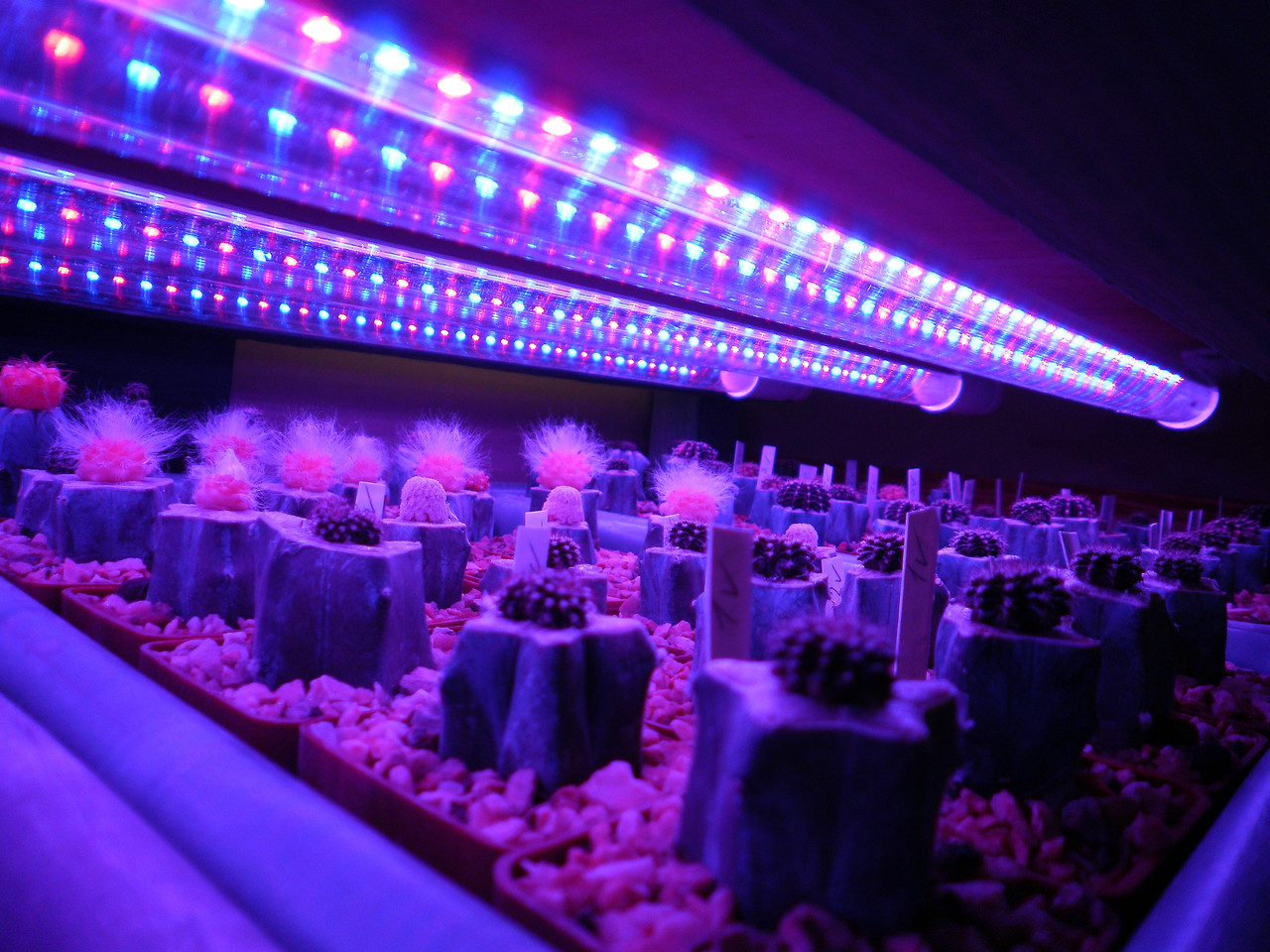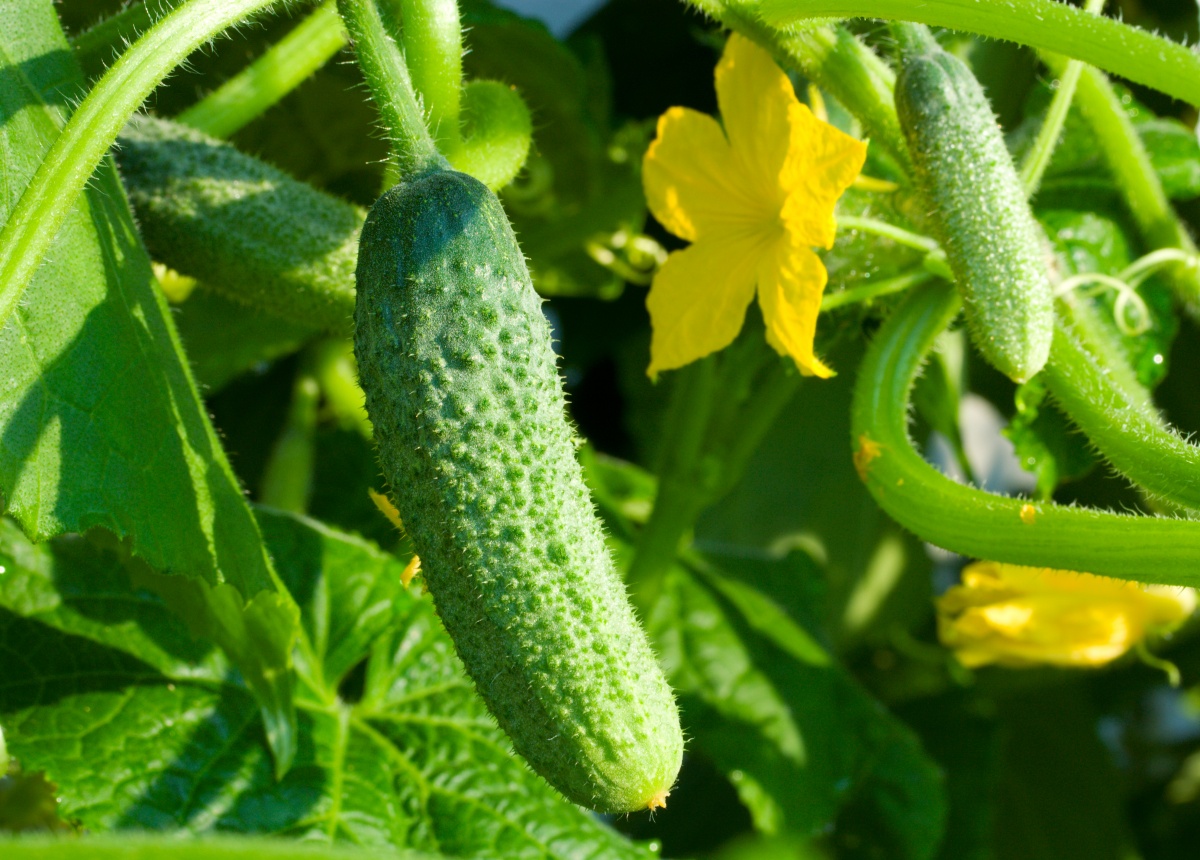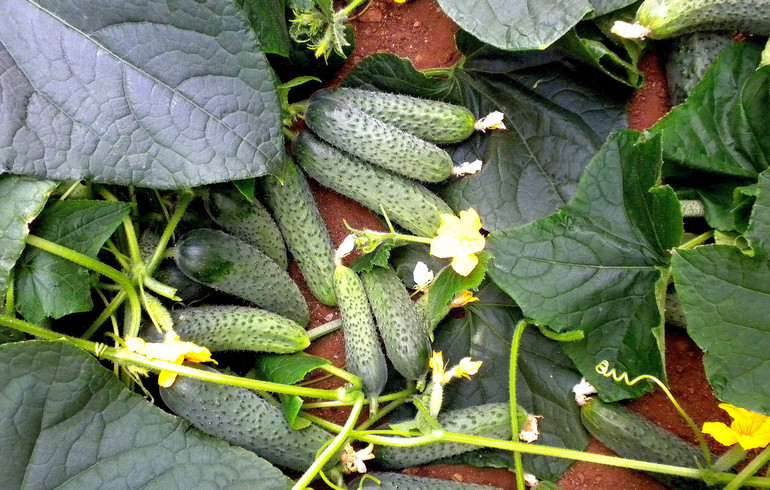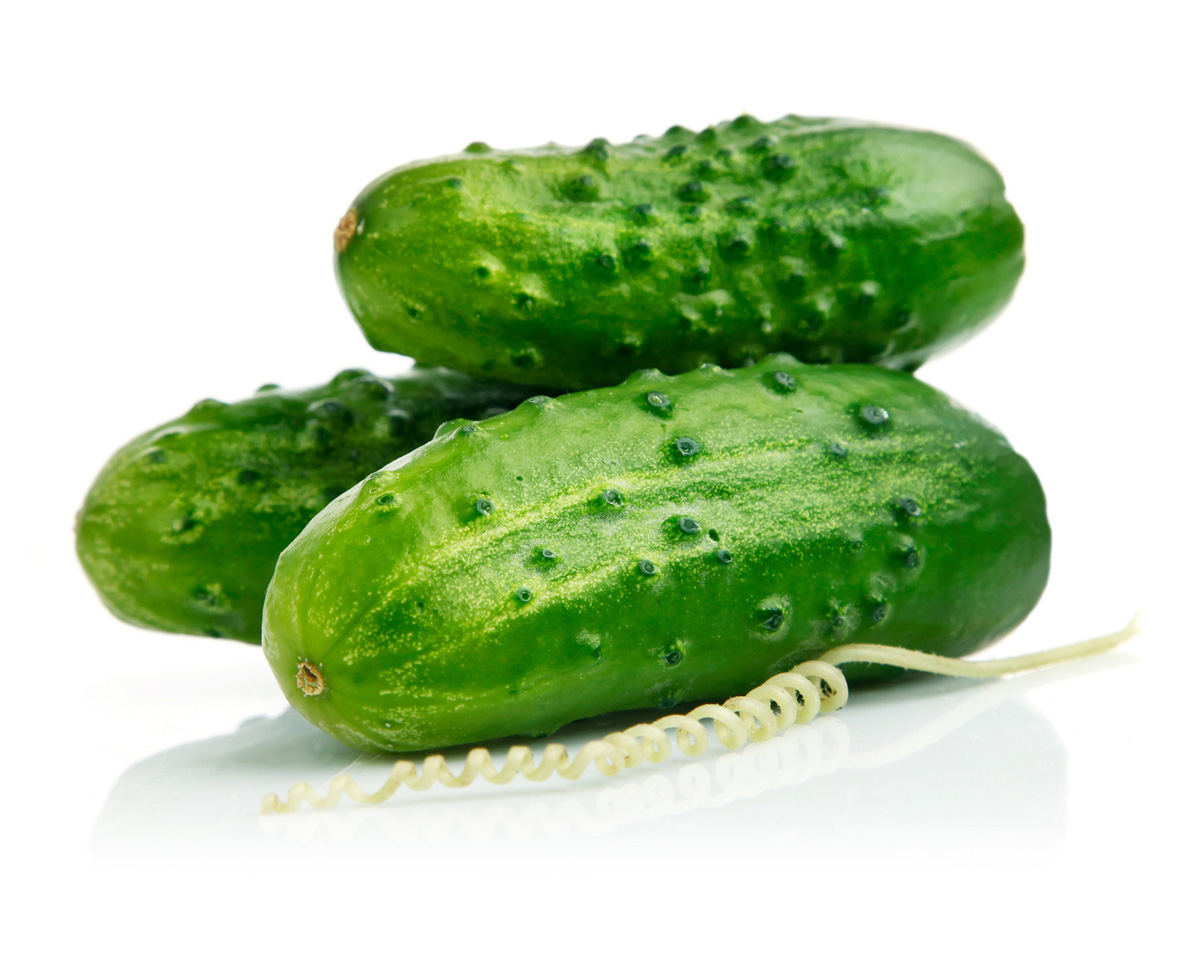Content:
Some farmers doubt whether gherkins are a variety or unripe cucumbers. In fact, it is a miniature variety with a number of features:
- length not more than 10 cm,
- dense consistency without voids,
- thin peel,
- bright green colors.
In cooking, gherkins are prized for their versatility and aesthetic appearance. They are suitable for pickling, decorating dishes, preparing salads and canapés, fresh consumption. Canned gherkins are crispy and not bitter. In addition, they are low in calories and contain iodine and minerals.
Parthenocarpic and self-pollinated varieties of gherkins
F1 - designation of hybrid varieties of the first generation, which carry the best qualities of crossed plants. It is not customary to collect their seeds, because a set of traits is achieved by selection.
- Canned F1,
- Thumbelina F1,
- Patti F1,
- Nastya F1,
- Altai gherkin F1,
- Gherkin-Zakuson F1,
- Children's F1,
- Accordion player F1,
- Filippok F1,
- Prima donna F1,
- Adam F1,
- Merengue F1.
Parthenocarpic cucumber varieties do not require pollination and are therefore ideal for greenhouse cultivation. When growing on a balcony, the ability of the plant to self-pollinate is especially important.
High-yielding varieties of gherkins
The highest yields are:
- Cucumber Moravian gherkin f1. Fruit weight - 95 g, yield: up to 15 kg / m². Pollinated by insects, grows up to 1.5 m. Short branches, immune to mosaic viruses and powdery mildew.
- The grade is F1 itself. Fruiting in 50 days, yield: up to 9 kg / m², belongs to the super-beam varieties.
- Cucumber of Korotyshka F1 variety. Ripens in 40 days, yield: up to 9 kg / m².
- Cucumbers gherkins of grade Canochny f1. Ripens in 40 days, weight - 85 g, yield: 10 kg / m².
- Grade Children's F1. Weight - 70 g, yield: 15 kg / m², ripening occurs on day 40.
- Variety Druzhnaya Semeyka F1. The onset of fruiting in 45 days, yield: 15 kg / m².
Of these, versatile and less whimsical - the Moravian Gherkin variety and the Druzhnaya Semeyka variety.
To get a good harvest, each stage of cultivation is carefully planned:
- choose seeds from trusted producers,
- prepare the soil in autumn,
- sow on time,
- watered abundantly
- do not allow damage by pests,
- do not use large doses of mineral fertilizers,
- take measures to prevent disease.
Planting rules in the open field by seed method
Seed preparation.
Season: spring, end of May.
Soak the seeds in a solution of salt and water. Those that went to the bottom are good planting material. The rest can be thrown away.
Next, the seeds should be disinfected for 20 minutes in a solution of 10 g of potassium permanganate and a liter of water.
Soil preparation.
Make furrows 70 cm apart. Dig holes 10 cm deep every 20 cm. Moisten the earth. Sprinkle with manure and peat.
Sowing seeds and mulching.
Temperature: from +15 to + 20 ° C.
Place 4 seeds in each hole to a depth of 2 cm. Cover with soil and cover with foil.To improve soil fertility, mulch is used - inorganic and organic materials. Nettles, sawdust, compost, and leaves will do. Cover with plastic wrap.
Benefits of mulching:
- soil moisture is preserved,
- the growth of weeds will decrease,
- the soil will not freeze and not overheat,
- fungal diseases will not be transferred from the soil to gherkins,
- the root system will develop faster.
Care and watering.
Water every 3 days with warm water, the required volume: 10 liters per m². Every 10 days do additional feeding: 1 liter of manure, 10 g of urea and 10 liters of water.
After the sprouts appear, the gherkins are tied to pegs and pinched.
To control pests, spray with Aktelik or Confidor products. For the prevention of bacteriosis, the drug Champion is suitable.
Rules for planting gherkins in a greenhouse
Greenhouse disinfection.
Season: Autumn.
For processing 20 m, a solution is enough: 1 tablespoon of copper sulfate and karbofos per 10 liters of water.
Soil preparation.
5 days before disembarkation of seedlings.
Use peat, humus, sawdust and wood ash as soil. Bring the mixture into the greenhouse and make beds 80 cm wide at a distance of 50 cm from each other. Apply organic fertilizers to the soil. Then water each bed with a hot solution: 500 ml of mullein, 1 teaspoon of copper sulfate and 5 liters of water. This is enough to water 1 m². Cover with plastic wrap to retain natural moisture and warmth.
Pull 2 wires over each bed at a height of 2 meters.
Seedling preparation.
After selection of low-quality material, the seeds should be hardened to make them more hardy. To do this, they are placed in a refrigerator for 9 hours, then they are heated by the battery for 6 hours. Then the seeds are placed in a warm place for germination. Can be planted in soil after 3 days.
Gherkins have delicate roots, so you need to sow on seedlings in peat pots or paper cups. The diameter of the container is 8 cm. A prerequisite is a drainage hole.
Manure, sawdust and peat are suitable as soil. Fertilizer - 1 g of magnesium sulfate and 3 g of urea.
Make 2 cm depressions in the soil, place the seeds there, cover with earth on top. Drizzle liberally and cover with plastic wrap to maintain the temperature at 25 ° C. After 3 days, the temperature can be lowered to 20 ° C.
It is recommended to use a phytolamp.
When each new leaf appears at the gherkin, fertilizer should be added.
Planting seedlings.
Early May.
After the appearance of 4 leaves, transfer the seedlings to the greenhouse. Dig holes, place a peat pot with a gherkin and sprinkle with peat. To attract bees, spray the seedlings with sweet water and open the window.
Formation of bushes.
5 days after planting, the seedlings are tied to supports. Pinch the main stem at the 6th leaf, and remove all lateral shoots.
Pest control and disease prevention.
To prevent bacteriosis, spray with preparations containing copper. The fungicide Cuprostat is suitable. To prevent the larvae of the sprout fly from eating the gherkin, spray with Aktellik. Spray root rot with Zaslon.
Variety Friendly family
One of the most popular varieties of gherkins.
Description:
- does not require pollination,
- tall,
- yield: 15 kg / m²,
- with a female flowering type.
Trellis planting rules in a greenhouse:
- Greenhouse processing. In autumn, wipe the surface with soapy water. Pull 2 wires 2 m above the ground, throw twine over them.
- Soil preparation. To reduce acidity, add dolomite flour or crushed chalk to the soil. The recommended soil temperature is 25 ° C. Make beds at a distance of 70 cm from each other, drive in stakes. Dig holes every 30cm.
- Planting seeds. Season: end of May. Put 4 germinated seeds in each hole with the tip up, cover with soil 1.5 cm.Sprinkle abundantly with warm water once a week. After the first leaves appear, mulch the land without manure. Apply fertilizers every 10 days, water the seedlings every 3 days. Remove fruits daily.
- Bush formation. When the leaves are 5 cm long, you can fasten the main stem to the twine. Pinch the side shoots at a distance of 50 cm from the ground, leaving 4 ovaries each.
- Pest control and disease prevention.
Balcony landing rules:
- Equipment preparation. On the glassed-in balcony, reinforce the wire and throw the twine tied to the stakes over it. Stick the stakes into the ground with seedlings. It should be borne in mind that each gherkin requires 30 cm² and a container with a volume of at least 3 liters with a drainage hole.
- Planting seedlings of gherkins. Sprouted seeds are placed in 3 pieces in a peat pot. After the appearance of 2 leaves, the seedlings are placed in the main container. Recommended temperature: 25 ° C. Use earth, humus and wood ash heated in the oven as soil. Water in the morning and evening. Apply fertilizer every 10 days - infusion of bird droppings.
- Formation. When the sprouts rise 40 cm along the twine, cut off the top. To form lateral lashes, pinch off the shoots over 10 leaves.
- Pest control and disease prevention. At home, cucumbers are harmed by aphids, ticks and whiteflies. To destroy them, spray the seedlings with a tobacco solution. To prevent diseases, mulch the soil with sawdust. Close blinds or curtains in hot weather.
Use lamps above the plants as additional lighting and heat.
The listed varieties are distinguished by their versatility and high yield. If you follow the planting recommendations, you can harvest 15 kg of cucumbers per m² even in winter.

